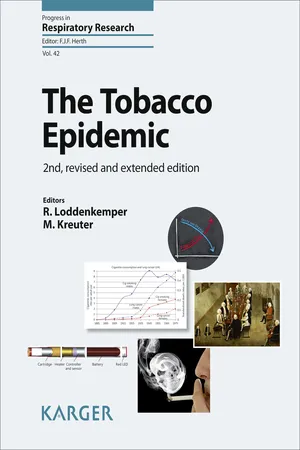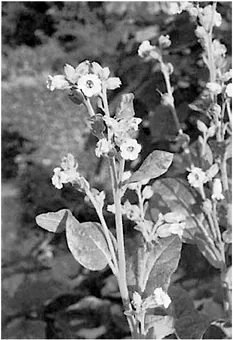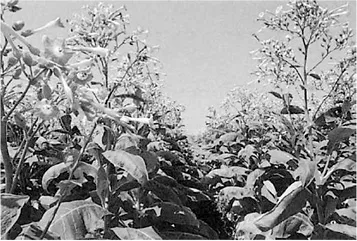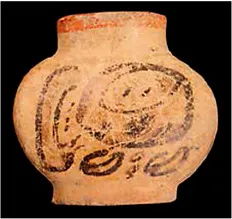
eBook - ePub
The Tobacco Epidemic
- 276 pages
- English
- ePUB (mobile friendly)
- Available on iOS & Android
eBook - ePub
The Tobacco Epidemic
About this book
This completely revised and enlarged 2nd edition of The Tobacco Epidemic provides a comprehensive update of the clinical, public health and political aspects of tobacco smoking. Since its 1st edition in 1997, knowledge on the health hazards of tobacco and nicotine addiction has increased considerably, but recent data has shown that the global problem has become more aggravated in low- and middle-income countries: if current trends continue, tobacco smoking will be responsible for the deaths of 1 billion people in the 21st century. Written by outstanding international experts, the book covers the history of tobacco production and use, the economics of tobacco use and control, as well as the health consequences of active and passive smoking in both adults and children. Special chapters discuss the impact of media, movies and TV on tobacco consumption in young people, the patterns and predictors of smoking cessation in the general population and in different social subgroups, and initiatives supported by the WHO Framework Convention on Tobacco Control. Readers will find the latest information on how nicotine dependence is treated with nicotine replacement products, what role health care professionals play in helping smokers to quit and what effects smoke-free environments, advertising bans and price increases have on smoking prevalence. The potential harms and benefits of smokeless tobacco, waterpipe tobacco smoking and electronic cigarettes are also evaluated. This book is a must-read for anyone in the medical profession who treats patients with smoking-related diseases and for those engaged in tobacco control. It will also be appreciated by interested nonmedical readers like journalists and legislators.
Frequently asked questions
Yes, you can cancel anytime from the Subscription tab in your account settings on the Perlego website. Your subscription will stay active until the end of your current billing period. Learn how to cancel your subscription.
No, books cannot be downloaded as external files, such as PDFs, for use outside of Perlego. However, you can download books within the Perlego app for offline reading on mobile or tablet. Learn more here.
Perlego offers two plans: Essential and Complete
- Essential is ideal for learners and professionals who enjoy exploring a wide range of subjects. Access the Essential Library with 800,000+ trusted titles and best-sellers across business, personal growth, and the humanities. Includes unlimited reading time and Standard Read Aloud voice.
- Complete: Perfect for advanced learners and researchers needing full, unrestricted access. Unlock 1.4M+ books across hundreds of subjects, including academic and specialized titles. The Complete Plan also includes advanced features like Premium Read Aloud and Research Assistant.
We are an online textbook subscription service, where you can get access to an entire online library for less than the price of a single book per month. With over 1 million books across 1000+ topics, we’ve got you covered! Learn more here.
Look out for the read-aloud symbol on your next book to see if you can listen to it. The read-aloud tool reads text aloud for you, highlighting the text as it is being read. You can pause it, speed it up and slow it down. Learn more here.
Yes! You can use the Perlego app on both iOS or Android devices to read anytime, anywhere — even offline. Perfect for commutes or when you’re on the go.
Please note we cannot support devices running on iOS 13 and Android 7 or earlier. Learn more about using the app.
Please note we cannot support devices running on iOS 13 and Android 7 or earlier. Learn more about using the app.
Yes, you can access The Tobacco Epidemic by R. Loddenkemper,M. Kreuter,R., Loddenkemper,M., Kreuter, J. J. F. Herth,F.J.F., Herth in PDF and/or ePUB format, as well as other popular books in Medicine & Cardiology. We have over one million books available in our catalogue for you to explore.
Information
Chapter 1
Loddenkemper R, Kreuter M (eds): The Tobacco Epidemic, ed 2, rev. and ext.
Prog Respir Res. Basel, Karger, 2015, vol 42, pp 1-18 (DOI: 10.1159/000369289)
Prog Respir Res. Basel, Karger, 2015, vol 42, pp 1-18 (DOI: 10.1159/000369289)
______________________
History of Tobacco Production and Use
Joan Hanafin · Luke Clancy
TobaccoFree Research Institute Ireland, Dublin, Ireland
______________________
Abstract
Tobacco has been in use for over 10,000 years and worldwide for over 500 years, but its use was limited by the intensity of time and labour involved in producing, preparing and using it. From the late 1800s, developments in mechanisation, transport and technology led to greater ease of production and use. Marketing, advertising and promotion by tobacco companies led to tobacco use on such a scale as to be called an epidemic. Tobacco regulation has existed since at least 1500. Growing scientific evidence based on tobacco-related mortality and morbidity, notably since the early 20th century, and public health interventions in place since the mid-20th century, led to a decrease in tobacco use amongst better-off, industrialised, western populations. There has been a concomitant increase in tobacco use among middle- and lower-income countries. As tobacco is a main risk factor for chronic diseases, including cancer, lung diseases and cardiovascular diseases, the late 20th and early 21st century have been characterised by public health campaigns to regulate tobacco. Many countries have enacted legislation in conformity with the WHO Framework Convention on Tobacco Control, but the number of smokers continues to rise, and tobacco-related disease and death continue to increase.
© 2015 S. Karger AG, Basel
This chapter provides an overview of the history of tobacco: its early agricultural and ceremonial origins; the globalization of tobacco cultivation and use; changes in tobacco production and use that occurred with industrialisation and mass production; the development of an empirical, epidemiological, scientific evidence base regarding the health effects of tobacco use; historic and current initiatives in regulating and controlling tobacco, and the evolving strategies of the tobacco industry in combatting tobacco control and increasing the number of users of its products, leading to the current global state of play regarding tobacco production, use and control.
The chapter is divided into three sections. Firstly, a brief history of tobacco cultivation, production, preparation and use throughout the ages is presented; secondly, a historical account of beliefs and knowledge about the health effects of tobacco are described, and, thirdly, the history of tobacco control and regulation and of the responses of the tobacco industry are summarised. The chapter concludes with a brief account, within the foregoing historic context, of current global trends and issues in tobacco use and control.
Tobacco Cultivation, Production, Preparation and Use
This section gives an account of tobacco from its earliest cultivation and use in agricultural societies for religious, creative and social purposes through the globalization of tobacco cultivation and use following the creation of new trade routes in the 1500s, to its greatly increased use following industrialisation, peaking in developed countries in the mid-20th century, and the pattern of socially unequal use in the early decades of the 21st century, characterised by differentiated patterns of use by age, gender, material resources and geography.
Early Tobacco Cultivation
The oldest record of tobacco, dating to the Pleistocene Era 2.5 million years ago, is a small cluster of fossilised tobacco leaves reported to have been found in 2010 by palaeontologists in northeastern Peru [1]. There is no indication of habitual use of tobacco by humans in the Ancient World on any continent except the tropical Americas, and it is thought that the tobacco plant began growing there about 6000 BCE [1]. By 1 CE, tobacco was ‘nearly everywhere’ in the Americas and ways of using tobacco included various smoking methods, chewing and probably hallucinogenic enemas [1].
The tobacco plant refers to any of various members of the genus Nicotiana in the nightshade (Solanaceae) family, which includes also the potato, tomato, garden pepper and many garden ornamental flowers. The plant genus Nicotiana was named in 1756 by the Swedish botanist Carolus Linnaeus; he described two species: Nicotiana rustica (fig. 1) and Nicotiana tabacum (fig. 2). Within the Nicotiana genus, there are about seventy species. N. tabacum does not occur naturally but is a product of human cultivation, a hybrid of Nicotiana sylvestris and Nicotiana tomentosiformis [2]. Native Americans used several species, the most popular of which was N. tabacum, thought to have been first cultivated in the highlands of Peru and Ecuador [3]. Tobacco can grow in any warm, moist environment, which means it can be farmed on all continents except Antarctica.
From its origins in tropical America, tobacco spread northwards during prehistoric times [4]. N. rustica (developed later in Russia as machorka) was the variety cultivated in North America and has higher nicotine content than the other tobacco plants [2]. Tobacco plants are cultivated for their leaves, which are dried and processed, mainly for smoking in cigarettes, cigars and pipes; it is also cut to form chewing tobacco or ground to make snuff or dipping tobacco, as well as other less common preparations [2]. Amerindians, in cultivating tobacco, developed the major ways of consuming the herb that are in use today [5]. All tobacco products deliver nicotine, a highly addictive ingredient to the central nervous system, with a confirmed risk of dependence [6, 7] (see also chapter 5).
Unlike every other crop cultivated by indigenous peoples during prehistoric times, tobacco was not cultivated for nutritional purposes. According to many accounts, tobacco played a critical role in religious and healing practices. Due to its high nicotine content, as well as the manner in which it was used, early tobacco use could produce hallucinogenic experiences [4]. Tobacco became a sacred plant and 10,000 years ago, Mayan priests lit sacred fires for ceremonial religious purposes, blowing repeatedly on the embers to kindle them into life, inhaling the smoke and thus experiencing the effects of the ingredients of the plant [2, p. 1]. The tobacco plant also attained a ceremonial religious status in the context of bringing a sacrificial offering to the gods [2] although other mixtures of sacred herbs were also common. Between 470 and 630 CE as the Mayas migrated and the Toltecs created the Aztec Empire, two ‘castes of smokers emerged … Those … who mingled tobacco with the resin of other leaves and smoked pipes with great ceremony … and the lesser Indians, who rolled tobacco leaves together to form a crude cigar’ [1]. The first pictorial record (fig. 3) of tobacco being smoked was found on Guatemalan pottery dating from around 600-1000 CE, on which a Maya is depicted smoking a roll of tobacco leaves tied with a string and a more than 1,300-year-old Mayan vessel decorated with hieroglyphics and containing tobacco was discovered by Dmitri Zagorevski, director of the Proteomics Core in the Center for Biotechnology and Interdisciplinary Studies at Rensselaer, and Jennifer Loughmiller-Newman, a doctoral candidate at the University at Albany in 2012.

Fig. 1. N. rustica.

Fig. 2. Field of flowering N. tabacum.

Fig. 3. Guatemalian pottery dating from around 600-1000 CE [53].
The Language of Smoking
The language of smoking has its origins mainly in this place and time. In 1870, Brewer [8, p. 5] wrote that the word tobacco was ‘probably derived from Tabac, an instrument used by the Americans in smoking the herb’; others say it derived from the islands of Tobago or Tabasco; others again from ‘the circumstances that the herb is wrapped up for use in a dry leaf which forms a sheath or envelope, and this kind of sheath is always called Tabacos by the Carribeans’ [8, p. 6]. The Mayan term for smoking is sikar, from which the word cigar and subsequently the word cigarette (derived from the French cigarette meaning small cigar) most likely derives.
The Globalization of Tobacco
Europe
From these origins in the Americas, tobacco grew to become, in the 16th and 17th centuries, a global commodity. There is general agreement that tobacco was unknown to Europeans prior to the 15th century and that it was introduced to Europe from the Americas as a result of the increase in naval exploration. Many sources note Columbus’s ‘voyage of discovery’ as the moment of introduction and various individuals are said to have been responsible for the introduction of different uses of tobacco to different European countries. For example, Christopher Columbus is said to have recorded, in 1492, having been offered certain dried leaves; the Spanish explorers Luis de Torres and Rodrigo de Jerez are credited with first observing smoking; Jerez was said to have become a smoker and brought the habit to Spain; the French ambassador to Portugal, Jean Nicot (after whom nicotine was named) sent the tobacco plant to France in 1560; Sir Francis Drake is said to have brought pipe smoking to England in 1572, and so on [9].
In his wide-ranging early history of tobacco, Comptom Mackenzie [10, p. 71] wrote that there was ‘not a tittle of evidence’ that Columbus brought back any of those dry tobacco leaves; that the two members of Columbus’s crew who saw the first cigars being smoked near Havana ‘vanished forthwith from recorded history’, and that it is ‘impossible to find any evidence to justify the de Torres/de Jerez claims’. Rather, Mackenzie [10, p. 73] claimed that a French Franciscan - Frère André Thévet - was the first person to bring tobacco seeds to Europe and that he was growing it in his garden i...
Table of contents
- Cover Page
- Front Matter
- Chapter 1 History of Tobacco Production and Use
- Chapter 2 Global Tobacco Epidemic
- Chapter 3 The Tobacco Epidemic and the Commercial Sector: Tobacco Industry Strategies to Increase Profits and Prevent Regulation
- Chapter 4 Chemistry and Primary Toxicity of Tobacco and Tobacco Smoke
- Chapter 5 Nicotine Dependence
- Chapter 6 The Psychology of the Smoker
- Chapter 7 Respiratory Disorders Related to Smoking Tobacco
- Chapter 8 Cardiovascular and Other (Except Respiratory) Disorders Related to Smoking Tobacco
- Chapter 9 Health Effects of Passive Smoking in Children
- Chapter 10 Health Effects of Passive Smoking in Adults
- Chapter 11 Economics of Tobacco Use and Control
- Chapter 12 Legislation and Smoking Prevention
- Chapter 13 The WHO Framework Convention on Tobacco Control
- Chapter 14 Youth and Tobacco
- Chapter 15 Impact of Media, Movies and TV on Tobacco Use in the Youth
- Chapter 16 Social Determinants of Cigarette Smoking
- Chapter 17 Smoking and Mental Health Problems
- Chapter 18 Patterns and Predictors of Smoking Cessation
- Chapter 19 Examining the Role of the Health Care Professional in Controlling the Tobacco Epidemic: Individual, Organizational and Institutional Responsibilities
- Chapter 20 Pharmacotherapy: Nicotine Replacement Therapy and Other Drugs in Smoking Cessation (Including Vaccination)
- Chapter 21 Smokeless Tobacco - Health Hazards or Less Harm?
- Chapter 22 Waterpipe Tobacco Smoking: A Less Harmful Alternative?
- Chapter 23 Electronic Cigarettes: The Issues behind the Moral Quandary
- Author Index
- Subject Index